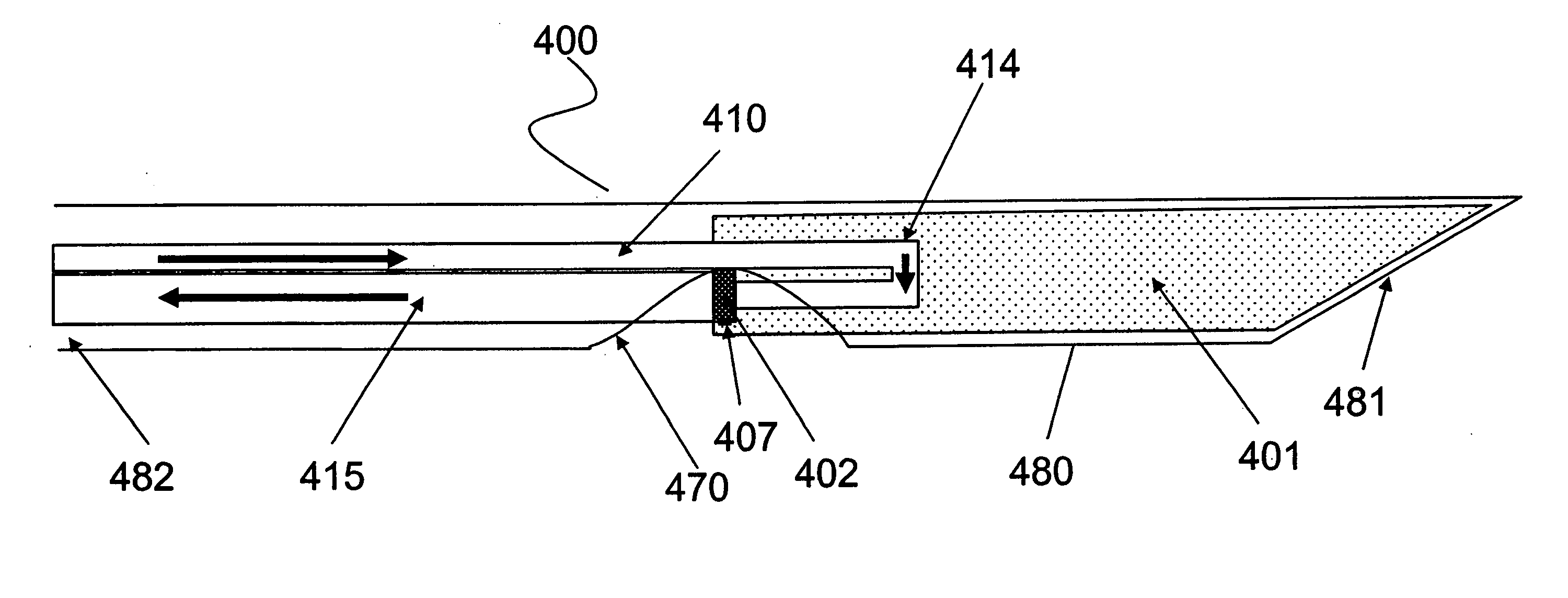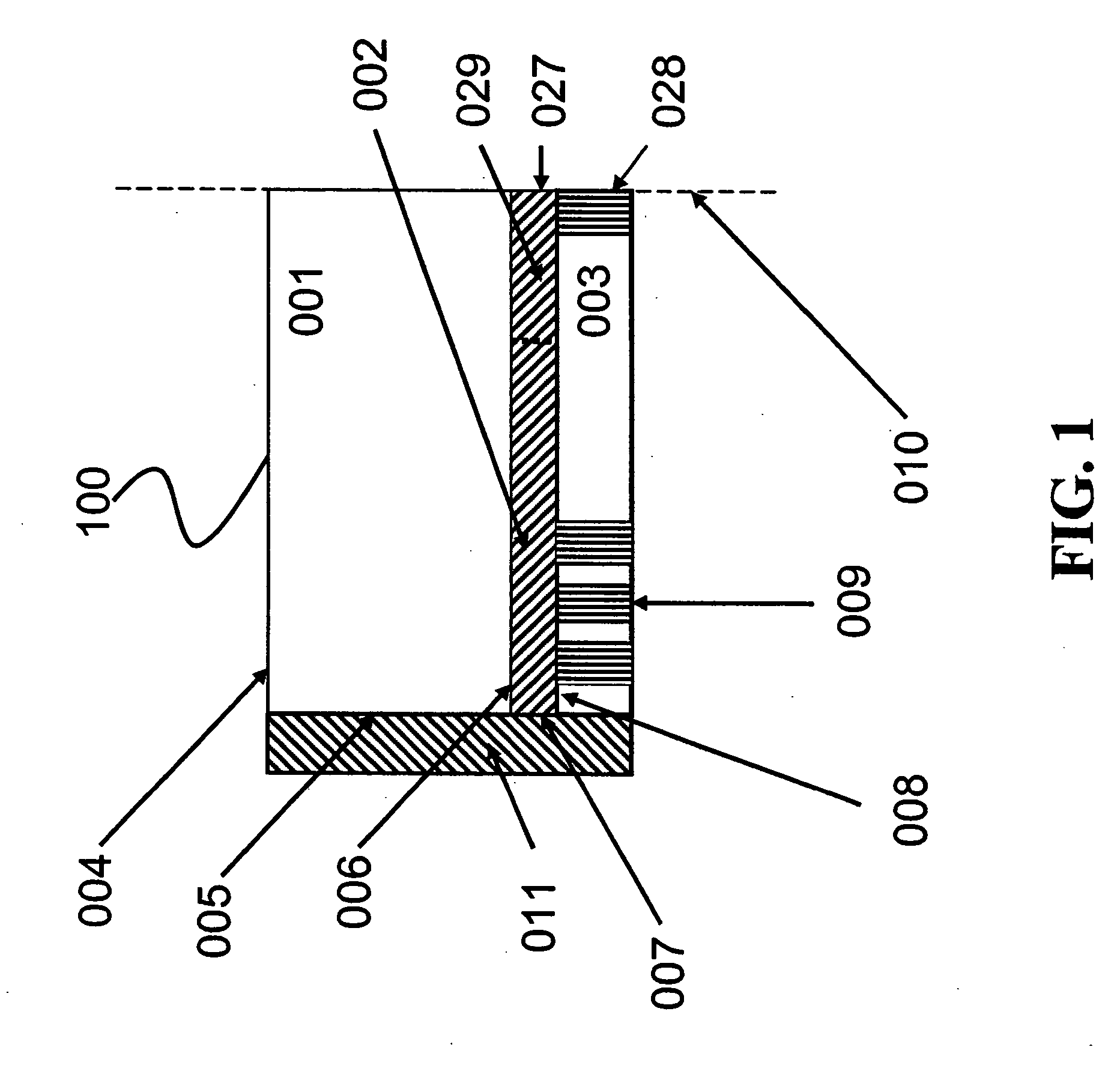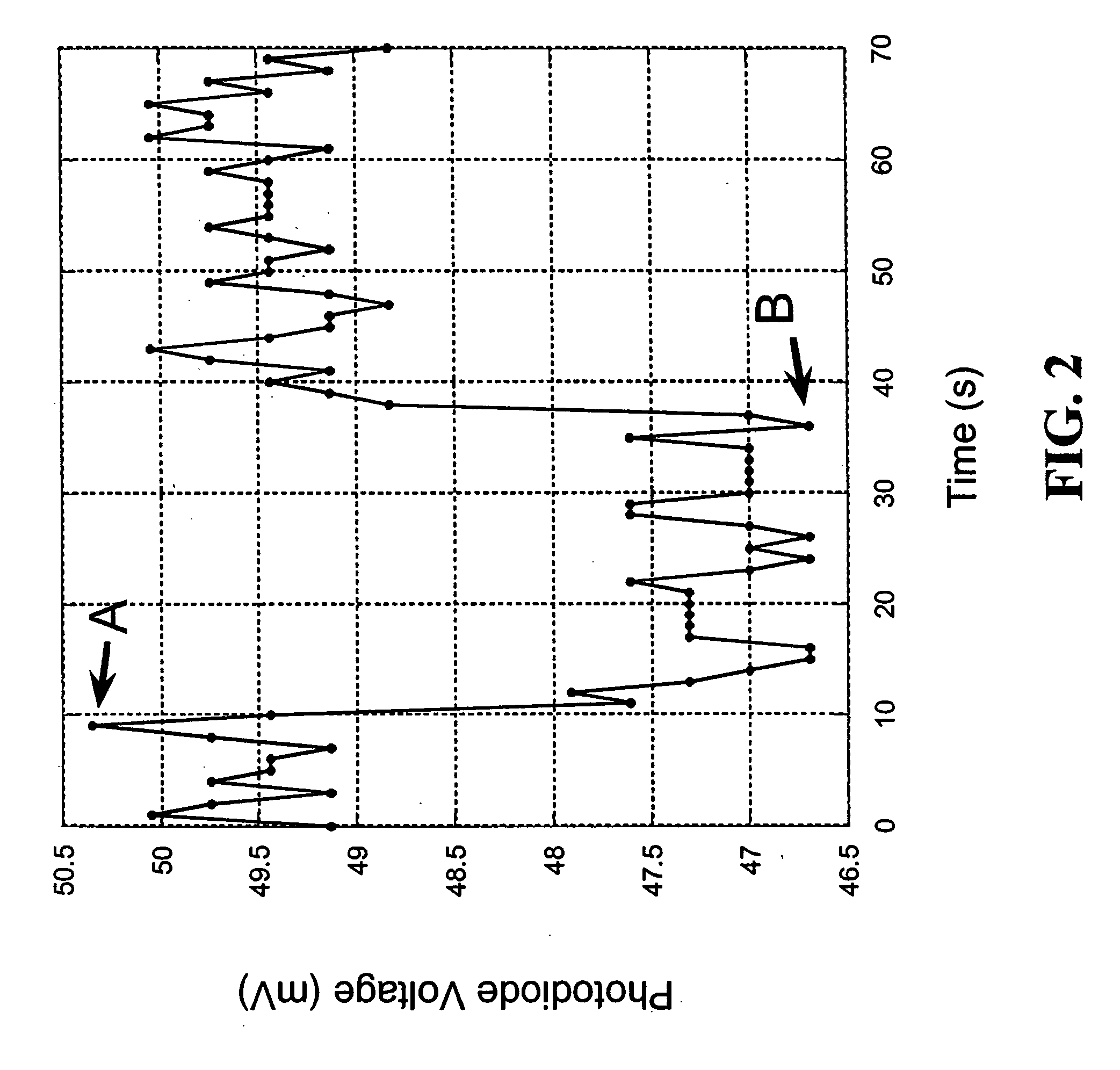Implantable biosensor and methods of use thereof
a biosensor and implantable technology, applied in the field of glucose monitoring, can solve the problems of lack of normal sensitivity, no magic pill to treat diabetes, failure of the health regulation system, etc., and achieve the effect of rapid oxygen transport and oxygen transpor
- Summary
- Abstract
- Description
- Claims
- Application Information
AI Technical Summary
Benefits of technology
Problems solved by technology
Method used
Image
Examples
example 1
Analysis of the Oxygen Conducting Capability of Hemogloblin
[0111] The following example illustrates the oxygen conducting capability of hemoglobin and the intended functionality of the reversible oxygen binding protein. A film of hemoglobin was prepared as follows. Human blood was extracted with a finger-stick device. A large drop of the blood was deposited on one end of a rectangular microscope glass slide. A blood smear ⅛ inches by 1½ inches in dimension was created by sliding a microscope cover glass from the blood drop, across the glass slide to create a thin film of blood across the glass slide. The glass slide was then covered in cellophane leaving approximately ¼ inch of the blood smear exposed in the long axis. A glass coverslip was placed on the cellophane to ensure a good seal. This setup ensures no-flux oxygen boundaries on all surfaces and edges of the blood smear, except for at the exposed ¼ inch at the end. A diode laser's beam was directed through the glass slide, bl...
example 3
Glucose Measurements Using an Illustrative Sensor
[0137] This Example demonstrates detection of glucose in a relatively simple glucose sensor that includes two stabilized oxygen transport matrices in communication with one another. One of the illustrative stabilized oxygen transport matrices was an oxygen transport region and the other was a glucose reaction region that included a stabilized glucose oxidase-hemoglobin thin gel.
[0138] A contiguous oxygen transport region and glucose reaction region were deposited on a glass slide, coated with silicon, and a glucose inlet was present on a surface of the glucose reaction region. The glucose reaction region was made with 20 mg glucose oxidase and 0.1 ml of human blood crosslinked with a dilute formaldehyde solution. The steps for constructing the glucose reaction region are outlined below in more detail.
[0139] 1. 0.1 ml of whole human blood was combined with 0.3 ml of a solution containing a 1:3 ratio of 70% isopropyl alcohol to disti...
PUM
 Login to View More
Login to View More Abstract
Description
Claims
Application Information
 Login to View More
Login to View More - R&D
- Intellectual Property
- Life Sciences
- Materials
- Tech Scout
- Unparalleled Data Quality
- Higher Quality Content
- 60% Fewer Hallucinations
Browse by: Latest US Patents, China's latest patents, Technical Efficacy Thesaurus, Application Domain, Technology Topic, Popular Technical Reports.
© 2025 PatSnap. All rights reserved.Legal|Privacy policy|Modern Slavery Act Transparency Statement|Sitemap|About US| Contact US: help@patsnap.com



